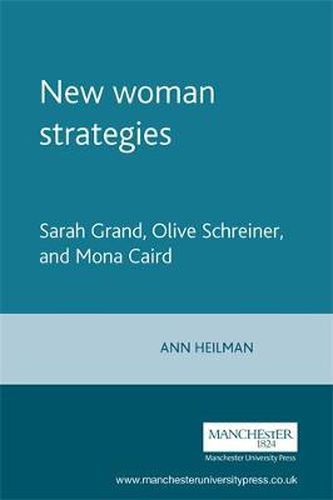Readings Newsletter
Become a Readings Member to make your shopping experience even easier.
Sign in or sign up for free!
You’re not far away from qualifying for FREE standard shipping within Australia
You’ve qualified for FREE standard shipping within Australia
The cart is loading…






This book offers a new approach to fin-de-siecle and New Woman criticism, focusing on three key exponents of New Woman fiction: Sarah Grand, Olive Schreiner and Mona Caird. Heilmann pays close attention to the gaps, shifts, inconsistencies and performative acts by which each writer positioned herself ideologically and textually. She highlights the fluidity of these positions through time, and in relation to different modes of publication and target audiences. All three writers defined political activism as an expression of female creativity, and distanced themselves to varying degrees from existing artistic movements catering for a mainly male-dominated market. Heilmann shows how they drew on, mimicked, feminised and ultimately transformed traditional literary and cultural tropes and paradigms - femininity (Grand), allegory (Schreiner) and mythology (Caird) - to create a generation of New Women who imploded the patriarchal cultural and aesthetic framework in order to construct female creativity as the ‘mother’ principle of artistic genius.
$9.00 standard shipping within Australia
FREE standard shipping within Australia for orders over $100.00
Express & International shipping calculated at checkout
This book offers a new approach to fin-de-siecle and New Woman criticism, focusing on three key exponents of New Woman fiction: Sarah Grand, Olive Schreiner and Mona Caird. Heilmann pays close attention to the gaps, shifts, inconsistencies and performative acts by which each writer positioned herself ideologically and textually. She highlights the fluidity of these positions through time, and in relation to different modes of publication and target audiences. All three writers defined political activism as an expression of female creativity, and distanced themselves to varying degrees from existing artistic movements catering for a mainly male-dominated market. Heilmann shows how they drew on, mimicked, feminised and ultimately transformed traditional literary and cultural tropes and paradigms - femininity (Grand), allegory (Schreiner) and mythology (Caird) - to create a generation of New Women who imploded the patriarchal cultural and aesthetic framework in order to construct female creativity as the ‘mother’ principle of artistic genius.